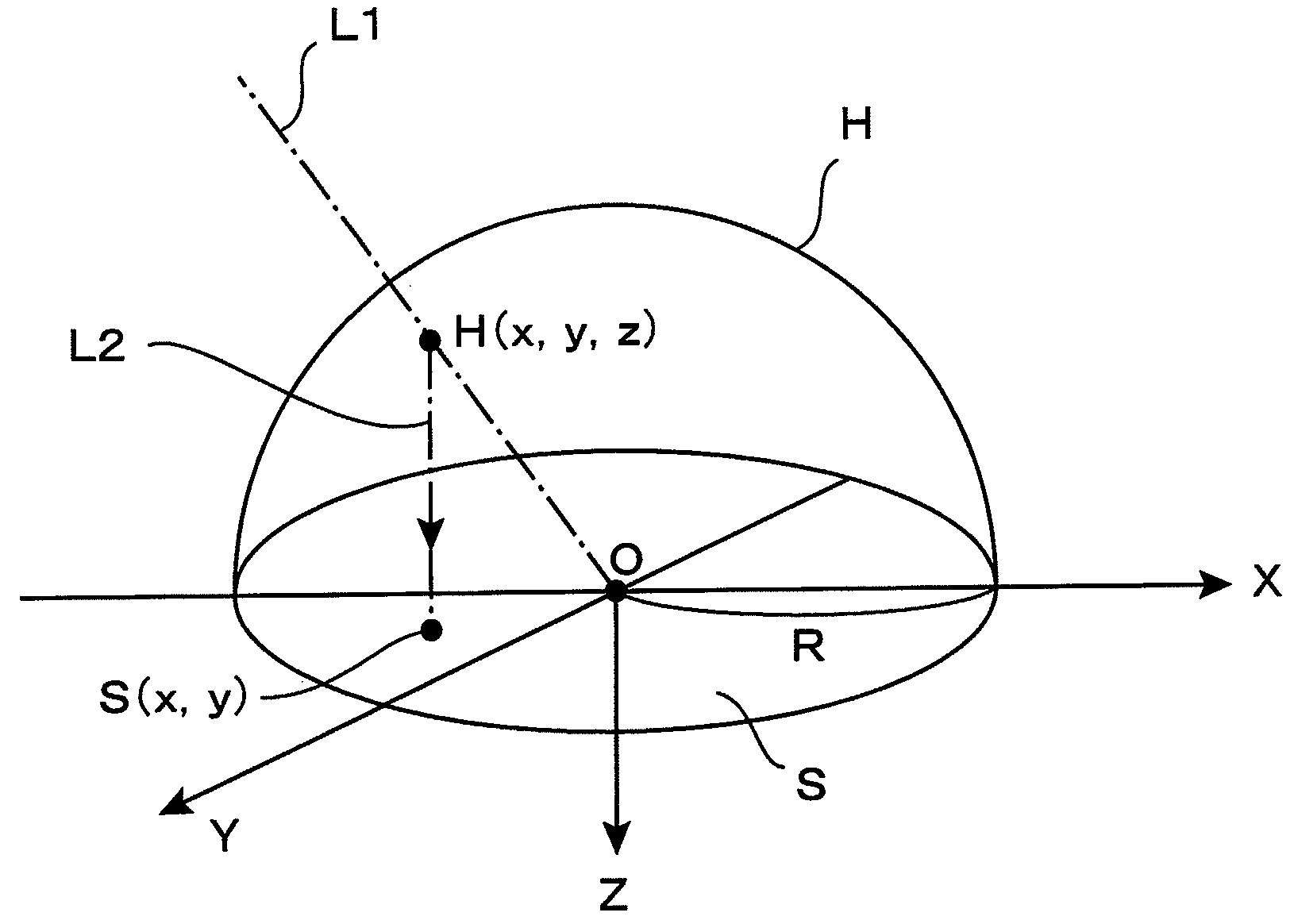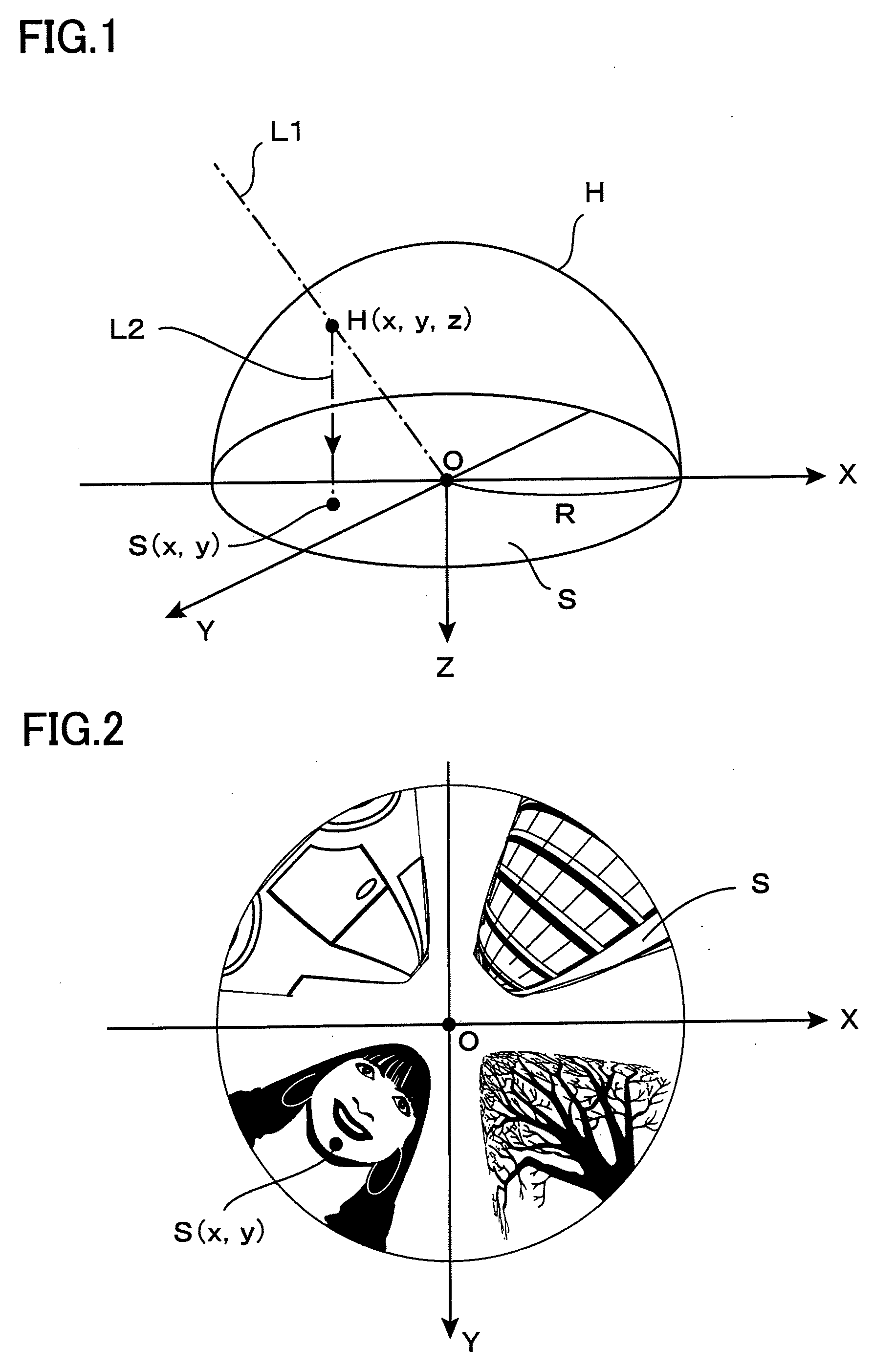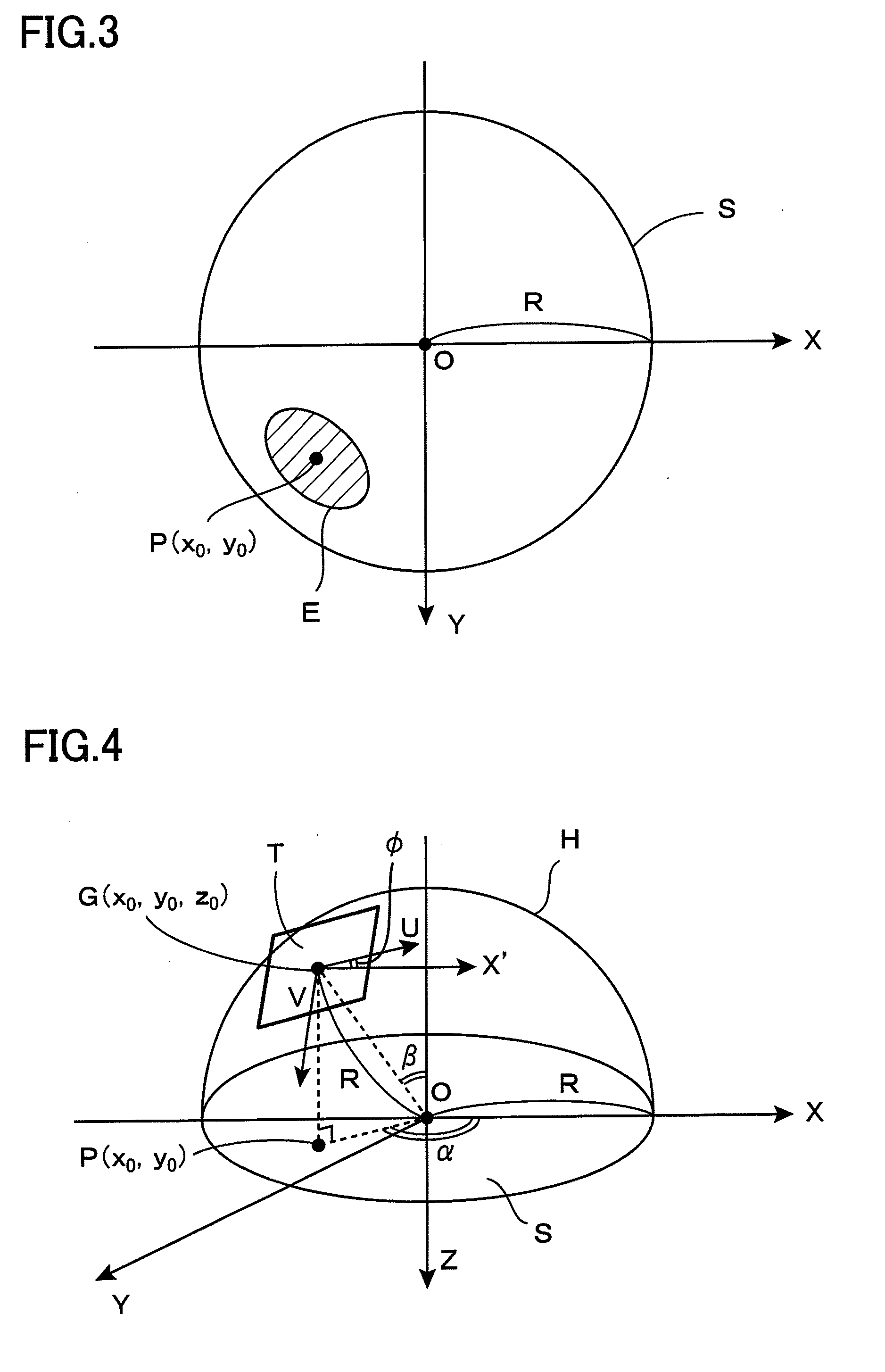Image converter and image converting method
a technology applied in the field of image converter and image converting method, can solve the problems of poor user operability, distorted circular images of fisheye lenses photographed by use of fisheye lenses, etc., and achieve the effect of reducing the operation load of conversion
- Summary
- Abstract
- Description
- Claims
- Application Information
AI Technical Summary
Benefits of technology
Problems solved by technology
Method used
Image
Examples
Embodiment Construction
[0117]Hereinafter, a description will be given for embodiments which illustrate the present invention.
>>
[0118]First, a description will be given for general characteristics of a distorted circular image photographed by use of a fisheye lens and a basic principle of cutting out a part thereof and converting it into a planar regular image. FIG. 1 is a perspective view showing a basic model of forming a distorted circular image S by photographing by use of a fisheye lens based on the orthogonal projection method. In general, fisheye lenses are classified into plural types, depending on projection methods thereof. The model shown in FIG. 1 is a fisheye lens based on the orthogonal projection method (a method for applying the present invention to fisheye lens based on projection other than those based on the orthogonal projection method will be described in Section 5).
[0119]FIG. 1 shows an example in which a distorted circular image S is formed on the XY plane in a three-dimensional XYZ ...
PUM
 Login to View More
Login to View More Abstract
Description
Claims
Application Information
 Login to View More
Login to View More - R&D
- Intellectual Property
- Life Sciences
- Materials
- Tech Scout
- Unparalleled Data Quality
- Higher Quality Content
- 60% Fewer Hallucinations
Browse by: Latest US Patents, China's latest patents, Technical Efficacy Thesaurus, Application Domain, Technology Topic, Popular Technical Reports.
© 2025 PatSnap. All rights reserved.Legal|Privacy policy|Modern Slavery Act Transparency Statement|Sitemap|About US| Contact US: help@patsnap.com



